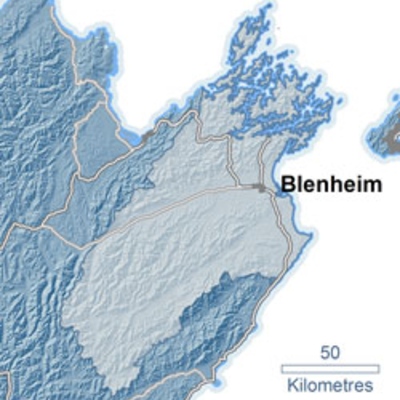Climate change projections for the Marlborough region
This page provides an overview of how the climate in the Marlborough region is likely to change into the future and what implications this has for the region.
This page provides an overview of how the climate in the Marlborough region is likely to change into the future and what implications this has for the region.

Projections of climate change depend on future greenhouse gas emissions, which are uncertain. There are four main global emissions scenarios ranging from low to high greenhouse gas concentrations. This page presents regional projections as a range of values from a low emissions to a high emissions future.
The projected changes are calculated for 2031–2050 (referred to as 2040) and 2081–2100 (2090) compared to the climate of 1986–2005 (1995).
Compared to 1995, temperatures are likely to be 0.7˚C to 1.0˚C warmer by 2040 and 0.7˚C to 3.0˚C warmer by 2090.
By the end of the century, Marlborough is projected to have from 6 to 38 extra days per year where maximum temperatures exceed 25˚C. The number of frosts could decrease by around 7 to 19 per year.
Rainfall will vary locally within the region. The largest changes will be for particular seasons rather than annually.
Summer rainfall in Blenheim is projected to increase by up to 9 per cent by 2090.
According to the most recent projections, extreme rainy days are likely to become more frequent in Marlborough by 2090 under the highest emissions scenario.
The Marlborough region is likely to experience significant decreases in seasonal snow. By the end of the century, the number of snow days experienced annually could decrease by as much as 30 to 40 days in some parts of the region. The duration of snow cover is also likely to decrease, particularly at lower elevations.
Less winter snowfall and an earlier spring melt may cause marked changes in the annual cycle of river flow in the region. Places that currently receive snow are likely to experience increasing rainfall as snowlines rise to higher elevations due to rising temperatures. So for rivers where the winter precipitation currently falls mainly as snow and is stored until the snowmelt season, there is the possibility for larger winter floods.
The frequency of extremely windy days in Marlborough by 2090 is likely to increase by between 2 and 10 per cent. There may be an increase in westerly wind flow during winter, and north-easterly wind flow during summer.
Future changes in the frequency of storms are likely to be small compared to natural inter-annual variability. Some increase in storm intensity, local wind extremes and thunderstorms is likely to occur.
New Zealand tide records show an average rise in relative mean sea level of 1.7 mm per year over the 20th century. Globally, the rate of rise has increased, and further rise is expected in the future.
The Ministry for the Environment provides guidance on coastal hazards and climate change, including recommendations for sea level rise.
See Preparing for coastal change: A summary of coastal hazards and climate change guidance for local government. The guidance was updated in December 2017.
By 2090, the region could expect*:
| Spring |
|
|---|---|
| Summer |
|
| Autumn |
|
| Winter |
|
*Projected changes are relative to 1995 levels. The values provided capture the range across all scenarios. They are based on scenario estimates and should not be taken as definitive. For more information, see the full report on climate projections.
By 2090, the time spent in drought ranges from minimal change through to more than double compared to 1995. More frequent droughts are likely to lead to water shortages, increased demand for irrigation and increased risk of wild fires. Droughts are expected to increase in frequency and intensity over time.
Coastal roads and infrastructure may face increased risk from coastal erosion and inundation, increased storminess and sea-level rise.
There may be an increase in the occurrence of summer water-borne and food-borne diseases such as Salmonella.
Climate change could increase the spread of pests and weeds. It is anticipated that pest and disease regimes for all fruit crops could change, particularly through warmer winters. Crop diseases such as fungi and viruses may penetrate into the region where currently they are excluded by lower temperatures.
Warmer temperatures, a longer growing season and fewer frosts could provide opportunities to grow new crops. Farmers might benefit from faster growth of pasture and better crop growing conditions. Horticultural crops, such as kiwifruit and wine grapes, are likely to show the greatest gains from higher average temperatures. However, these benefits may be limited by negative effects of climate change such as prolonged drought or greater frequency and intensity of storms.
The Ministry for Primary Industries website and associated Climate Cloud website have more information on the regional impacts of climate change on agriculture.
Marlborough District Council’s climate change information [Marlborough District Council website]